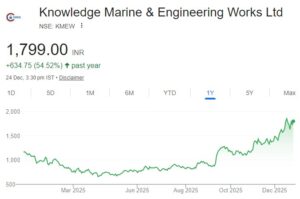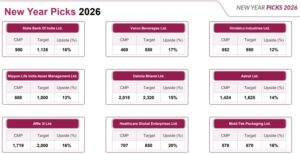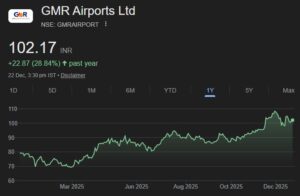![]()
Warren Buffet, the doyen of the Investment World, says you must look at as many things as possible. And eventually, you will find a bargain. And when you find a bargain, you must act.
Phillips Carbon Black is one such bargain, in our opinion. Philips Carbon Black has a couple of things going for it.
First, Phillips Carbon Black has reputed promoters with a proven track record; the RPG Group of companies;
Second, Phillips Carbon Black is India’s largest and the world’s 8th largest carbon black company with an annual turnover exceeding $ 251 million. Phillips Carbon Black is not only the largest exporter in Asia, but also commands a market share of 41% in the domestic market.
Third, the carbon black produced by Phillips Carbon Black is used in the manufacture of tyres. The auto sector is booming and this means greater demand for the tyre and the tyre retrofits sector where carbon black is used.
Fourth, to meet the growing demand, Phillips Carbon Black plans to set up a 50,000-tonne carbon black plant over the next two years at an estimated investment of Rs 200 crores. Phillips Carbon Black also plans to set up an 18 MW power plant in Kochi and Mundhra. This plant will be in addition to the 50,000 tonnes capacity that Phillips Carbon Black is setting up at Mundra.
Phillips Carbon Black has entered into a joint venture agreement to set up its first overseas carbon black plant in Vietnam having a capacity of 65,000 tonnes with a captive power plant of 12 MW. The total investment for this project will be in the tune of $63 million and Phillips Carbon Black will hold 80 percent in the JV. Commercial operations are expected to commence in 2012.
Financials of Phillips Carbon Black
| Period ending (months) | 31-Mar-2010 (12) | 31-Mar-2009 (12) | 31-Mar-2008 (12) |
| Net sales | 12325.70 | 11632.80 | 10182.46 |
| Other Income | 3.00 | 149.80 | 186.63 |
| Total Income | 12328.70 | 11782.60 | 10369.09 |
| Cost of goods sold | 10447.20 | 12286.00 | 8982.66 |
| OPBDIT | 1881.50 | -503.40 | 1386.43 |
| PAT | 1226.90 | -648.40 | 893.09 |
| Gross Block | – | – | 4506.57 |
| Equity capital | 282.50 | 282.50 | 252.53 |
| EPS (Rs.) | 43.43 | -22.95 | 35.37 |
| DPS (Rs.) | – | – | 4.00 |
| BV (Rs.) | – | – | 95.80 |
| P/E range (x) | 0.73 – 4.96 | NA | 3.37 – 8.40 |
| Debt / Equity (x) | – | – | 1.20 |
| Operating margin (% of OI) | 15.3 | -4.3 | 13.4 |
| Net margin (% of OI) | 10.0 | -5.5 | 8.6 |
Fifth, Phillips Carbon Black reported a return to profits.
Q4 2010: Phillips Carbon Black reported a net profit of Rs 36.26 crore in the Quarter ended March 2010 for the financial year 2009-2010 compared to a net loss of Rs 57.12 crores in the Quarter ending March 2009. Its’ sales rose 78.92% to Rs 362.48 crores in the Quarter ending March 2010 for the financial year 2009-2010 compared to Rs 202.59 crore in the Quarter ending March 2009.
Year 2010: For the year 2009-2010, the net profit was Rs 122.69 crore compared to a net loss of Rs 64.84 crore during the previous year ended March 2008-2009. The sales rose 14.55% to Rs 1232.57 crore in the year ended March 2009-2010 compared to Rs 1076.02 crore during the previous year ended March 2008-2009. The total income from operations increased 78.9% to Rs. 362.5 crores as compared to last year. In the power segment, the revenues increased to Rs. 20.2 crore in Q4FY2010 vs Rs. 5.1 crore in Q4FY2009.
Sixth, Phillips Carbon Black is cheap. At the CMP of about Rs. 200, Phillips Carbon Black is quoting at a PE of 5.49. Given the promoters, the sector, the profitability, Phillips Carbon Black looks like a huge value stock with low downside risk and high reward.
Phillips Carbon Black’s Risk Factors
Downside Risk:
First, in FY 2008-09, Phillips Carbon Black suffered an operating loss of Rs 82.92 crore and net loss of Rs 64.84 crore owing to cheap imports. Cheap imports can be a recurring problem.
Second, the raw material is a product called Carbon Black Feed Stock which is derived from crude oil and its pricing is related to that of crude oil. If crude prices shoot up, it will be detrimental to Phillips Carbon Black.
Third, Phillips Carbon Black is dependent on the fortunes of the automobile sector. There is no slowing in demand being witnessed at least at present.
Phillips Carbon Black’s Research Reports
[download id=”91,92,93,94″]






The risk is in the Goenka management.